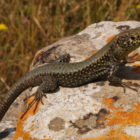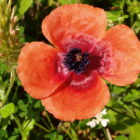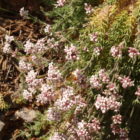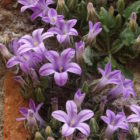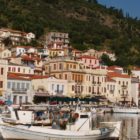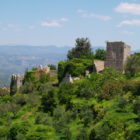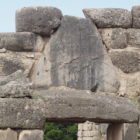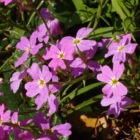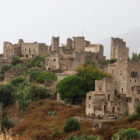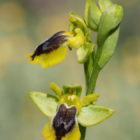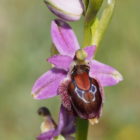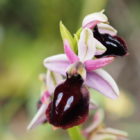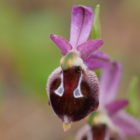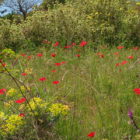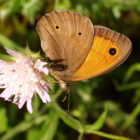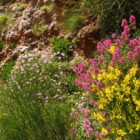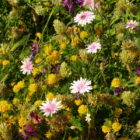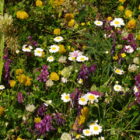Dates & Prices |
BOOK HOLIDAY |
Dates: April (available on request)
Price: £1,295
Single Room Supplement: £150
Deposit: £150 per person
Price Includes: All meals, accommodation, all ground transport including transfers, services of guides, holiday report & charitable donation
Not Included: Flights, travel insurance, entry to archaeological sites, drinks & any other personal items
Conservation Donation: 10% of profits donated to a wildlife project or charity
Leader: Dr Yiannis Christofides
Group Size: Minimum of 4 and a maximum of 12 guests plus 1-2 leaders
Grade: Gentle paced walks in a variety of terrains
Holiday Highlights
- Led by Yiannis Christofides – botanist, naturalist, guide & author of The Flora of Cyprus)
- Discover the wonderful and historic sites of Mycenae, Mystras, Mani
- Spring orchids & Peloponnese endemic flowers
- Explore Mount Menalo for early bulbs and early alpines
- A wide variety of perennials such as Cistus, Helianthemum, Salvia, Anchusa, Onosma,Alkanna methanaea, Crepis rubra, Linum pubescens.
- Early bulbs such as Cyclamen peloponnesiacum, Muscarispecies, Anemone pavonina
- Enjoy early butterflies such as Scarce Swallowtail, Clouded Yellow, Black-veined White, Glanville fritillary, Spotted fritillary Mallow Skipper, Inky Skipper, Powdered Brimstone & Southern Swallowtail
- Birds such as Blue Rock Thrush, Rock Nuthatch, Black-eared Wheatear, Woodchat shrike, Short-toed Eagle
- Superb Greek food!
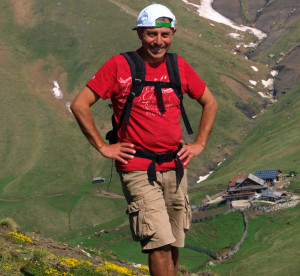 Holiday Guides
Holiday Guides

Yiannis Christofides is a botanist living in the Troodos Mountains of Cyprus. Having obtained a degree in Chemistry from the University of London he returned to his mountain village where he took up botany. This led to a new book on the Orchids of Cyprus. Several new plants were recorded for Cyprus and new locations were found for old ones. He has since published a new book in 2018, The Illustrated Flora of Cyprus.
His interests include Orchids round the Mediterranean, the Floras of Cyprus, Greece and Turkey and also the flora of European Mountains. He takes a keen interest in other life-forms such as Butterflies and other Insects, Reptiles, Dragonflies and even Lichens. He likes to share his knowledge with members of his groups and his infectious enthusiasm makes him one of our most popular leaders. Yiannis is also knowledgeable about the geology and history of areas he visits. He currently leads on our Cyprus, Lesvos, Crete, Rhodes, Peloponnese, French Pyrenees, Alps and Italian Dolomites trips.
The Peloponnese, Pelops island, father of Atreus. king of Mycenae, founder of the Atreidae dynasty, whose battles to conquer Troy inspired Homers Illiad, is Greece’s southernmost mainland peninsula. From high mountains in the north and extensive phrygana in the south it is a land of varied landscape and habitats. The phrygana is habitat for a rich variety of orchids and bulbs, and indeed one of the best places to see autumn flowering Crocuses and Cyclamen. In spring the same places are a riot of colour covered in yellow-flowered Crown daisies, red Poppies and white sheets of Anthemis chiawith a great variety of orchids and bulbous plants. We shall explore Mycenae, centre of the Greek Bronze age civilization, with its massive Cyclopean masonry and the famous Lion Gate, and also the magical tomb of Atreus. On the itinerary is also Mystras, the last outpost of the Byzantine empire and the church where the last Paleologos was crowned emperor before his fatal journey to Constantinople in 1453. Of the three southern peninsulas of the Peloponnese Mani is perhaps the most iconic with its fortified towers set in a dramatic landscape. We expect to see Ophrys argolica, the argolid ophrys, Ophrys ferrum-equinum, Ophrysbombyliflora, Ophrys mammosa, Ophrys spruneri, Orchis lactea, Ophrys aesculapi, Serapiassp, Anacamptis papilionacea and many more.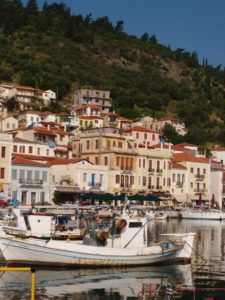



Day 1. Arrival at Athens airport and transfer to our hotel near Mycenae. Overnight in Mycenae.
Day 2. Explore the ancient acropolis of Mycenae and the tomb of Atreus. Onosma species grow on the ancient walls with Campanula andrewsii and Verbascum undulatum. We should see our first orchids in the phrygana. We continue our journey southwards and transfer to our next base in Gythio
Day 3. A day exploring the Mani peninsula. Orchards should be full of Papaver rhoeas, Anthemis chia, Silene colorata and Ferula communis. Euphorbia species should be at their best now and we should see Euphorbia dendroides, Euphorbia rigida, Euphorbia acanthothamnos and Euphorbia characias. An orchids rich area, we expect to see Ophrys argolica, Ophrys ferrum–equinum, Ophrys aesculapi, Ophrys tenthredinifera. Teucrium brevifolium, Cistus species, Asphodeline lutea, are other plants expected to be seen. Two other notable plants to be found are Fritillaria davisii and Tulipa goulimyi. Overnight in Gythio
Day 4. Malea peninsula. Today we explore the third Peloponnese peninsula. Orchids and bulbs, especially Tulipa goulimyi and Ornithogalum atticum south of the village of Elliniko. Other plants tolook for are Stachys spreitzenhoferi subsp. virella, Onosma frutescens, Cerinthe retorta, Lavendula stoechas,Malcolmia graeca subsp. bicolor, Lavatera arborea, Matthiola sinuata, Silene integripetala subsp. geuteri (Porto Kagio) Salvia pomifera, and Matthiola incana with bright red flowers. Overnight in Gythio
Day 5. Today we explore the mountainous area of the Parnon for its endemics. We may be a little early for these high alpines but there a chance to seek Asperula tayeta and Stachys chrysantha. The forests here consist of Abies cephalonica, Pinus nigra and the rare Juniperus drupacea. Overnight in Gythio
Day 6. Today we leave our base in Gythio and travel northwards to the abandoned Byzantine city of Mystras, where Rock Nuthatches can be seen nesting among the ruins. A wonderful wildlife site, with many plants such as Onosma frutescens, Onosma graeca, Silene goulimyi, Silene gigantea, Hypericum empetrifolium, Campanula topaliana, Stachys candica, Euphorbia characias, Muscari commutatum, Muscari botryoides and Phlomis fruticosa grow in abundance over the site. We then visit the nearby Parori gorge to look for Cyclamen peloponnesiacum and Orchis pauciflora. Overnight in Mystras
Day 7. Return to Mycene Mount Menalo. We will go right to the top to look for snow-melt plants. Depending on the season we expect to see Crocus olivieri, Crocus sieberi, Ornithogalum exscapum, Scilla bifolia, Gagea amplyopetala and Gagea peduncularis and Corydalis solida. Other plants to be seen here include Anemone blanda, Saponaria calabrica, Matthiola flexuosa, Draba lasiocarpa, Iberis pruitii, Malcolmia chia and Aethionema saxatile as well as many orchids including Ophrys aesculapii. We shall look for Fritillaria graeca. Overnight in Mycene
Day 8 Return to Athens
Please note: the above itinerary is subject to changes in terms of the daily running order and content. We take the local weather conditions into account, along with how the flowering season is progressing and make appropriate adjustments in order to provide you with the best daily excursions possible.
New holiday so testimonials to follow later
New holiday so reports will appear later


